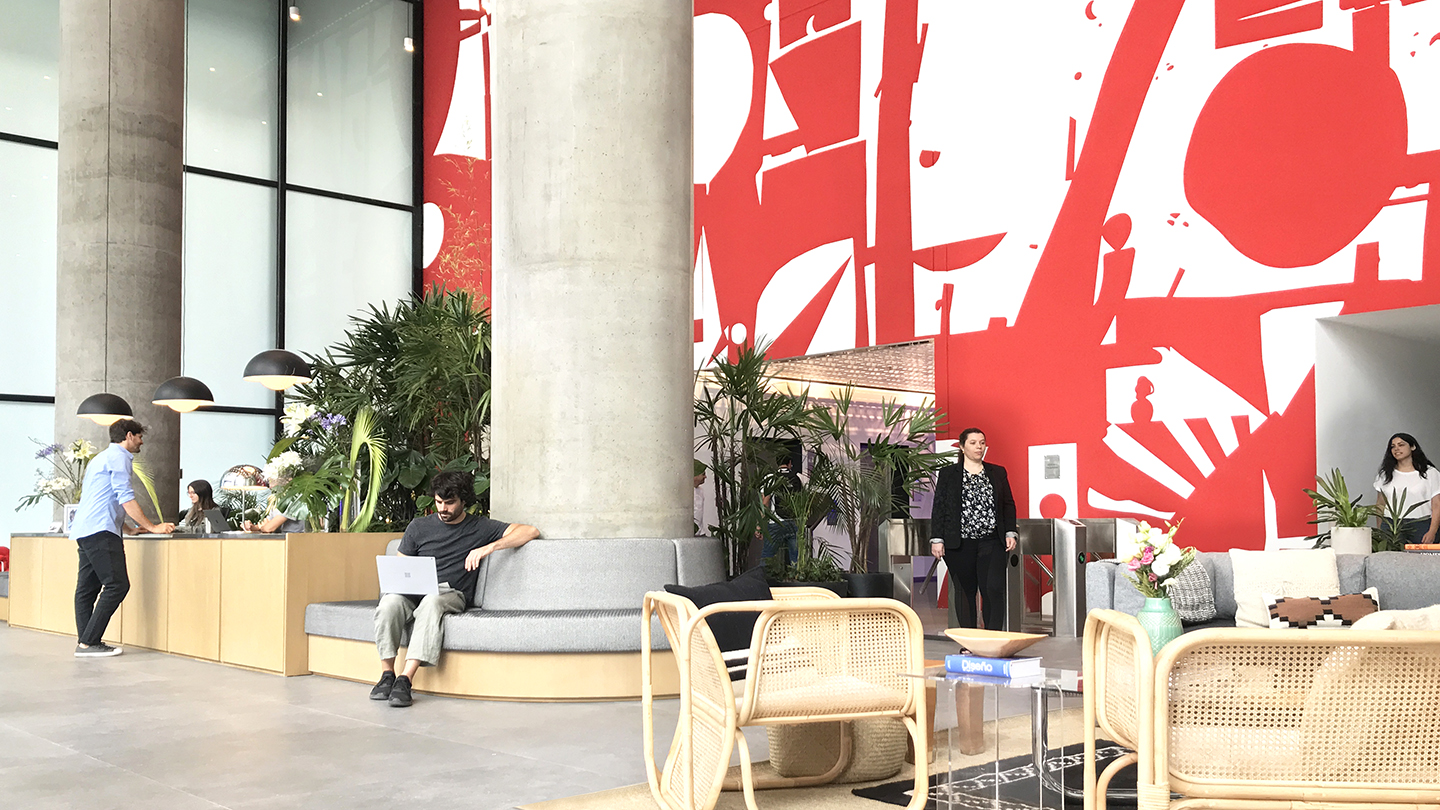This article originally appeared in Players of Life.
Today we live in a very different reality from what we were used to a little more than a year ago in terms of work models. Currently, the hybrid method has become very relevant, gaining ground among Mexican companies by offering the same or better results in productivity and savings for companies and more freedom for their employees.
In an interview, Alvaro Villar, general manager of Mexico and Central America, shared his expertise about hybrid work models. These have had a great impact on his sector as the pandemic has accelerated profound changes in the way of working and generated greater demand for flexible spaces, a product that WeWork has offered since its inception and has been strengthening ever since.
“Thanks to our global footprint, numerous locations, and the tremendous flexibility we offer in terms of contracts, volume, and space customization, there is no other provider that can meet the new demand for flexible space and facilitate the implementation of the hybrid model, immediately and at scale,” he added.
It is worth noting that Mexico is a very important market for WeWork. In fact, the company’s first location in all of Latin America was in Mexico City five years ago. Since then it has grown at an accelerated pace, and today WeWork has 25 buildings in the country, in strategic locations such as Mexico City, Guadalajara, and Monterrey.
What are the current trends in the hybrid work mode?
The objective of the hybrid model is to balance the needs of the employees and those of the company.
Among other trends, we mainly observe the hub-and-spoke model, where companies have a central office and other satellite offices to support employees living in different areas of the city. We have also identified the skeleton staffing model, which consists of rotating teams that physically enter the office. However, the most common trend is to combine office days with remote work days, which does not necessarily mean working from home. The best thing about the hybrid model is that each company can design the best option that will generate a positive impact on employees.
Why do you think that nowadays more companies are implementing this work modality?
Our way of working was transformed as a result of the pandemic. This past year showed us that we have the tools to work effectively wherever we are, but we also discovered the disadvantages of remote work; at times we felt isolated and that our workspace was not always free of distractions. A hybrid model can mitigate the negative effects of remote work, while maintaining its advantages, such as achieving work-life balance.
For companies, the hybrid model is an opportunity to reconfigure their offices, attract new talent, increase productivity, and sustain that positive impact over the long term.
We see a very positive outlook, and we are confident that in the coming years we will see exponential growth in the demand for flexible spaces, and that more and more companies will adopt the hybrid model.
What are the main advantages you see in this model?
I can highlight three major advantages: increased productivity, overall employee well-being, and cost efficiency.
In a hybrid workplace, workers can make better use of their time and decide how they are most productive. When employees are happier and less stressed, they work better. On the other hand, the model can increase satisfaction for a number of reasons, from the psychological benefits of having full control of your schedule to spending quality time with family.
Speaking of cost, a hybrid office doesn’t need to have assigned desks; a mix of versatile spaces designed for different tasks can be incorporated. Once a company knows how many employees will be in the office, it can plan based on occupancy levels to reduce the cost of rent, office supplies, and other operating expenses. At WeWork, we mitigate these costs with an all-inclusive membership that is customizable according to each company’s needs.


What’s your opinion regarding the permanence of this trend in the long term?
At WeWork, we have always believed in flexibility as a key part of the future of work; the pandemic has only accelerated this change. There is no doubt that the model is here to stay because it’s based on the concepts of freedom and individuality, where employees and their companies can define the work model that best suits them.
The pandemic showed us that the traditional system is obsolete and that we can be productive from anywhere, as long as we have the right conditions and the necessary opportunities to connect with our team.
How do you envision the outlook for 2022 and 2023 in this regard?
We see a very positive outlook. We are certain that in the coming years we will see an exponential growth in the demand for flexible spaces and that more and more companies will adopt the hybrid model.
The latest studies confirm this trend: CBRE states that 86 percent of companies plan to use flex space as a key part of their real estate strategy.
What role does WeWork play in this new trend?
This is a key moment for us. The pandemic accelerated profound changes in the way we work and generated great demand for flexible spaces, a product that WeWork has offered since its inception and has been strengthening ever since.
Thanks to our global footprint, numerous locations, and the tremendous flexibility we offer in terms of contract, volume, and space customization, there is no other provider that can meet the new demand for flexible space and facilitate the implementation of the hybrid model, immediately and at scale.
Tell us about WeWork’s presence in Mexico and the role it currently plays in the sector.
This year, we are looking to partner with companies of all sizes that are reevaluating their space needs and considering adopting a hybrid work model.
In addition, we are about to launch a new product in Mexico that will change the rules of real estate. The new WeWork All Access membership will give access not only to WeWork’s 25 locations in Mexico but to its more than 750 locations around the world, all from a cell phone, with the ease of a click.
At WeWork, we can help companies make an efficient transition to the hybrid model. Whether they need to downsize or expand their space, set up satellite offices, or have a space for remote workers to collaborate, WeWork’s flexible spaces can meet the changing needs of any business.
The future of work is flexible, and more and more companies are turning to the hybrid model as a way to revive their economy and, more importantly, to get the flexibility their employees need.
This interview was translated by Cristina Sancen.
Rethinking your workspace?










